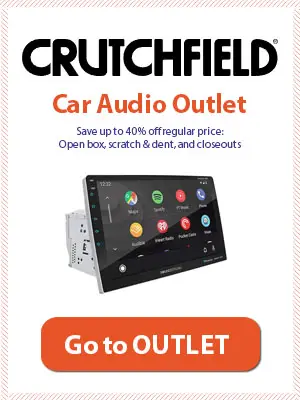Which is a better resistive or capacitive touch screen?
While the capacitive touchscreen is a better option among the two, you can pick either option for different reasons. Capacitive touchscreens have become more popular due to their multipoint touch detection and better display.
To give you a quick overview, we will have a capacitive vs. resistive touchscreen car stereo comparison in this article. This comparative review will help you decide if you should opt for a capacitive or resistive stereo touch panel.
Table of Contents
Capacitive vs. Resistive Touchscreen Car Stereo: A Snapshot
In terms of development and wide-scale use, resistive touchscreens precede capacitive panels. One of the first batches of touchscreen displays in car stereos features resistive touch. Resistive touchscreens consist of several thin conductive layers separating from which other in microns.
When you press the touch panel, those layers get pressed against each other and complete the circuit that subsequently sends an input signal for that particular touch. A resistive touchscreen is a single touchpoint interface, which means you can only tap a single touch at a time.
Capacitive touchscreens comprise a surface insulator and a transparent conductive layer under it. When you touch the screen, it distorts the electrostatic field on that particular spot and sends through the input signal. Capacitive touchscreens in car stereos or any other device can accommodate more than one touch at the same time.
Capacitive Touchscreen Pros & Cons
Pros
- More responsive
- Offers better display
- Touch capabilities don’t wear out too quickly
Con
- Expensive
- Only works with the direct touch
Resistive Touchscreen Pros & Cons
Pros
- Cost-effective
- Resistant to dust and water
- Can be used with gloves on and pens
Cons
- The display is not good in daylight
- Touch wears down with time
Face-to-Face Comparison
Let’s have a showdown of capacitive and resistive touchscreen in-car stereos for different characteristics and features.
Touchpoints
Capacitive touchscreens let you control your stereo with multiple tapping simultaneously. With resistive touchscreens, you can only make a single tap at a time.
Verdict: Capacitive touchscreen offers more flexibility with its touch activity. However, car stereo panels are not used like smartphone screens. Therefore, it doesn’t matter much, even if your stereo has a resistive touchscreen.
Input Methods
Capacitive stereo touchscreens primarily work with the direct touch of a bare finger. In contrast, resistive touchscreens offer versatility with inputs. Besides direct touch, you can also use them when wearing gloves. Moreover, you can use a stylus or any other pointed object to use the resistive touchscreen.
Verdict: Resistive touchscreens fares better than capacitive ones when it comes to input adaptability.
Price
The production cost of making a capacitive touchscreen is higher as compared to resistive touchscreens. Therefore, a panel with a capacitive touchscreen lies at a higher price point.
Verdict: Resistive touchscreen makes for relatively economical stereo display panels.
Sensitivity
The capacitive touchscreen is more sensitive to touch. Therefore, navigation remains a breeze on car stereos with capacitive touchscreens. The resistive touchscreen, on the other hand, doesn’t have the free-flowing responsiveness of capacitive panels.
Verdict: Capacitive touchscreens offer better responsiveness with their higher sensitivity and hence, last longer than resistive touchscreen stereo panels.
Display
The better display is one of the main reasons why capacitive touchscreens have gained popularity of late. In terms of car stereos, they offer good display in daylight as compared to resistive touchscreens.
Verdict: Capacitive touch panel boasts better display.
Physical Durability
Resistive touchscreens are more resistant to dust, debris, and splashes than capacitive panels.
Verdict: Resistive touchscreens are a better option for car stereos when it comes to durability and longevity.
Conclusion
We hope that the above comparative discussion helps you identify the suitable touchscreen option for your stereo display.
Opt for Capacitive Touch Display If:
- You spend a lot of time navigating the stereo screen
- You need a crystal clear display in all sorts of lighting
Opt for Resistive Touch Display If:
- You need an economical display panel
- You don’t mind the display quality and only want to use the panel as a touchpad
